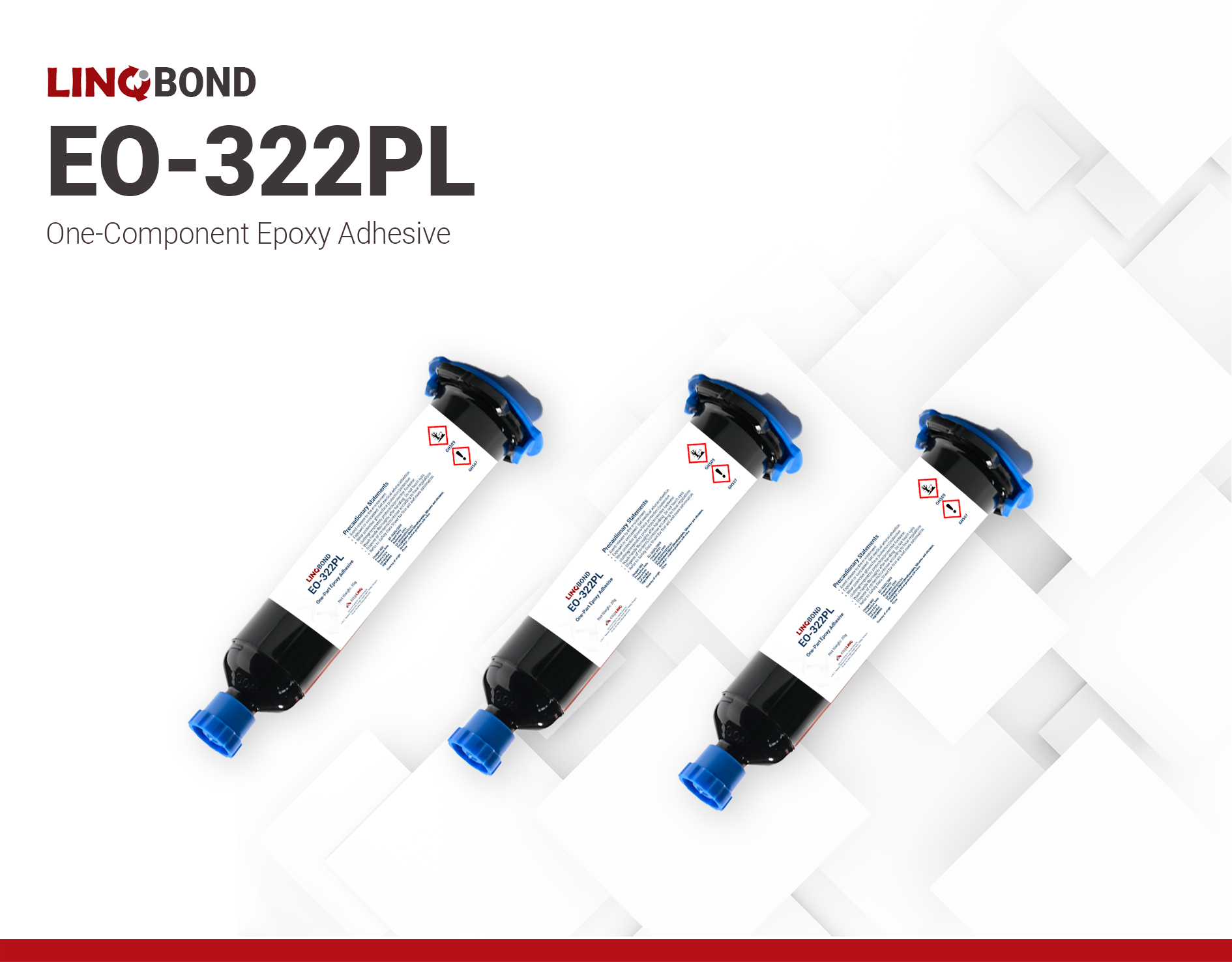LINQBOND EO-322PL
- High adhesion
- Medium-high temperature cure
- Ideal for sensitive components
Product Description
LINQBOND EO-322PL is a one-component epoxy adhesive, suitable for bonding and potting electronic components. It cures at medium to high temperatures. The cured product has a low-gloss surface with no oiliness and offers high bonding strength, particularly on plastic substrates. LINQBOND EO-322PL offers excellent chemical resistance, shock resistance, providing effective protection for electronic components. It retains its electrical properties even under high humidity and exhibits dimensional stability across a wide temperature range.
This adhesive is RoHS 2011/65/EU compliant, halogen-free according to IEC 61249-2-21 standards, and meets various environmental testing requirements. Overall, LINQBOND EO-322PL is an ideal choice for bonding memory cards, C-MOS assemblies, and heat-sensitive components.
Technical Specifications
| General Properties | |||||||
| Appearance Appearance Appearance at room temperature. | Black liquid | ||||||
| Pot Life Pot Life Pot life is the amount of time it takes for the viscosity of a material to double (or quadruple for lower viscosity materials) in room temperature after a material is mixed. It is closely related to work life but it is not application dependent, less precise and more of a general indication of how fast a system is going to cure. | 72 hours | ||||||
| Specific Gravity Specific Gravity Specific gravity (SG) is the ratio of the density of a substance to the density of a reference substance; equivalently, it is the ratio of the mass of a substance to the mass of a reference substance for the same given volume. For liquids, the reference substance is almost always water (1), while for gases, it is air (1.18) at room temperature. Specific gravity is unitless. | 1.22 | ||||||
| Physical Properties | |||||||
| Thixotropic index Thixotropic index Thixotropic Index is a ratio of a material s viscosity at two different speeds in Ambient temperature, generally different by a factor of ten. A thixotropic material s viscosity will decrease as agitation or pressure is increased. It indicates the capability of a material to hold its shape. Mayonnaise is a great example of this. It holds its shape very well, but when a shear stress is applied, the material easily spreads. It helps in choosing a material in accordance to the application, dispense method and viscosity of a material. | 2-3 | ||||||
| Viscosity Viscosity Viscosity is a measurement of a fluid’s resistance to flow. Viscosity is commonly measured in centiPoise (cP). One cP is defined as the viscosity of water and all other viscosities are derived from this base. MPa is another common unit with a 1:1 conversion to cP. A product like honey would have a much higher viscosity -around 10,000 cPs- compared to water. As a result, honey would flow much slower out of a tipped glass than water would. The viscosity of a material can be decreased with an increase in temperature in order to better suit an application | 19000-25000 mPa.s | ||||||
| Chemical Properties | |||||||
| Water Absorption | 0.23 % | ||||||
| Mechanical Properties | |||||||
| |||||||
| Electrical Properties | |||||||
| Surface Resistivity | 8.37e14 Ohms/sq | ||||||
| Volume Resistivity Volume Resistivity Volume resistivity, also called volume resistance, bulk resistance or bulk resistivity is a thickness dependent measurement of the resistivity of a material perpendicular to the plane of the surface. | 8.4x1013 Ohms⋅cm | ||||||
| Thermal Properties | |||||||
| |||||||
| Glass Transition Temperature (Tg) Glass Transition Temperature (Tg) The glass transition temperature for organic adhesives is a temperature region where the polymers change from glassy and brittle to soft and rubbery. Increasing the temperature further continues the softening process as the viscosity drops too. Temperatures between the glass transition temperature and below the decomposition point of the adhesive are the best region for bonding. The glass-transition temperature Tg of a material characterizes the range of temperatures over which this glass transition occurs. | 130 °C | ||||||
Additional Information
Directions for Use
- Thaw the adhesive at 2-13℃ for 1 hour then place it at 14-34℃ for 1 to 1.5 hours. Do not open or loosen the syringe cover before the product is done thawing.
- Clean and dry the surface of the substrate before applying EO-322PL.
- Apply the adhesive to either one piece or both pieces that need to be joined together. Ensure that both parts are in contact with each other as the adhesive is curing.
- Curing time varies depending on the geometry, substrates to be joined together, bondline thickness, and efficiency of the oven. Ensure that the cure schedule is in accordance with the actual production parts and equipment.
Storage and Handling
Store the sealed container at –20 °C to –5°C, away from moisture and heat. When unopened and stored properly, the shelf life is 181 days (about 6 months). Avoid keeping the product at 14 °C to 34 °C for too long, as this may affect its performance.



